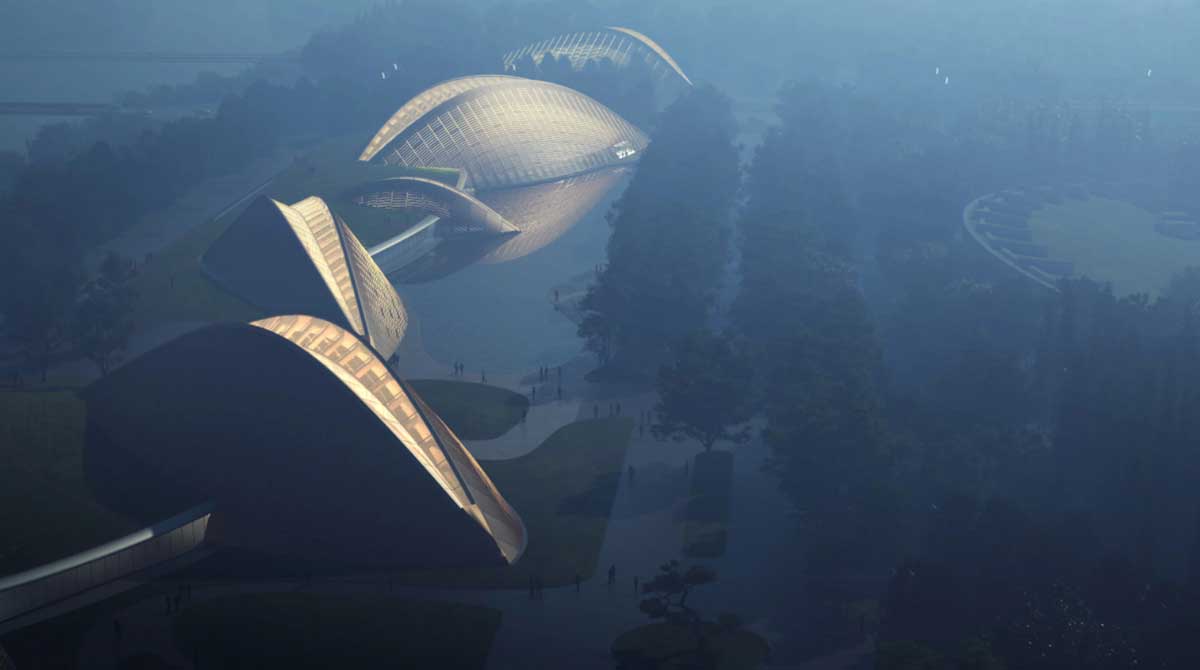The Eye of Sanxingdui is a dramatic concept by MAD Architects for the Sanxingdui Ancient Shu Cultural Heritage Museum, located in the western area of Guanghan City, Sichuan Province.
Led by Ma Yansong, the project is being created to celebrate the ancient mysteries of the Sanxingdui civilization. Filled with unearthed cultural relics dating from approximately 4500-2800 years ago, the site’s archaeology is rooted in the echoes of ancient cities, ancient states, and the ancient Shu culture of southwest China.
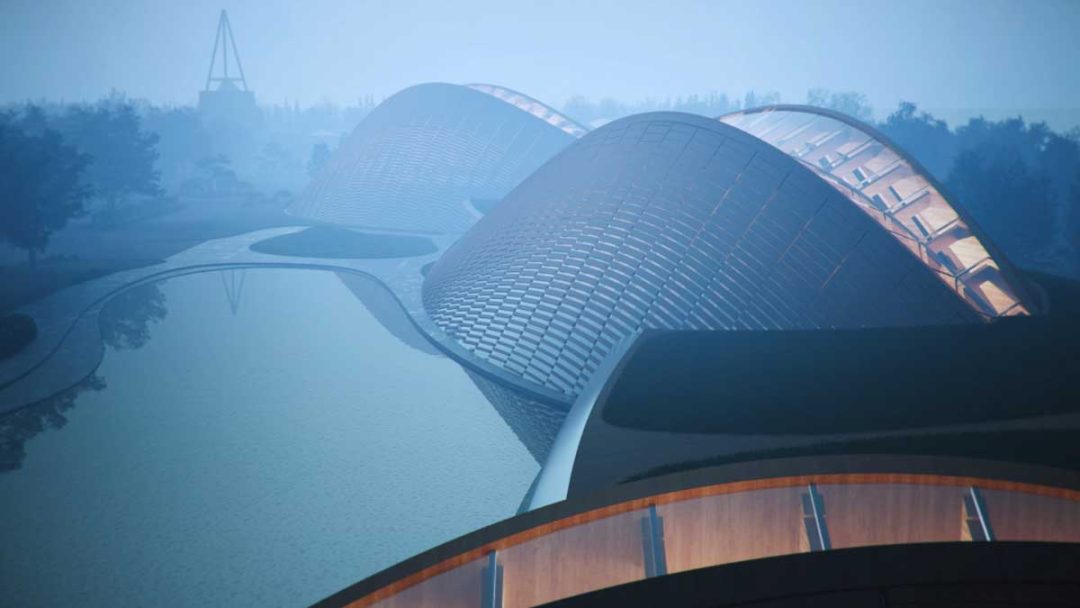
The Sanxingdui site has jointly applied with the nearby Jinsha site to be recognized as a world cultural heritage site by UNESCO. One of the most understood facts about the site is that the Shu Kingdom was located at the intersection of the Yangtze and Yellow River basins in China. The artifacts excavated at Sanxingdui offer clues of the mysterious local culture of the ancient Shu, entwined with traces of cultural influence from the Middle Kingdom which emerged when the Chinese population migrating into Shu.
Excavated artifacts from the site are displayed in the Sanxingdui Museum, comprising mainly of bronze, jade, gold, stone, pottery, ivory, and sea shells.
The Eye of Sanxingdui project sees a cluster of scattered wooden structures connect with the area’s timeless natural environment. The result is a park which acts as an urban and cultural public space where humanity and nature, the past and the future, can converge.
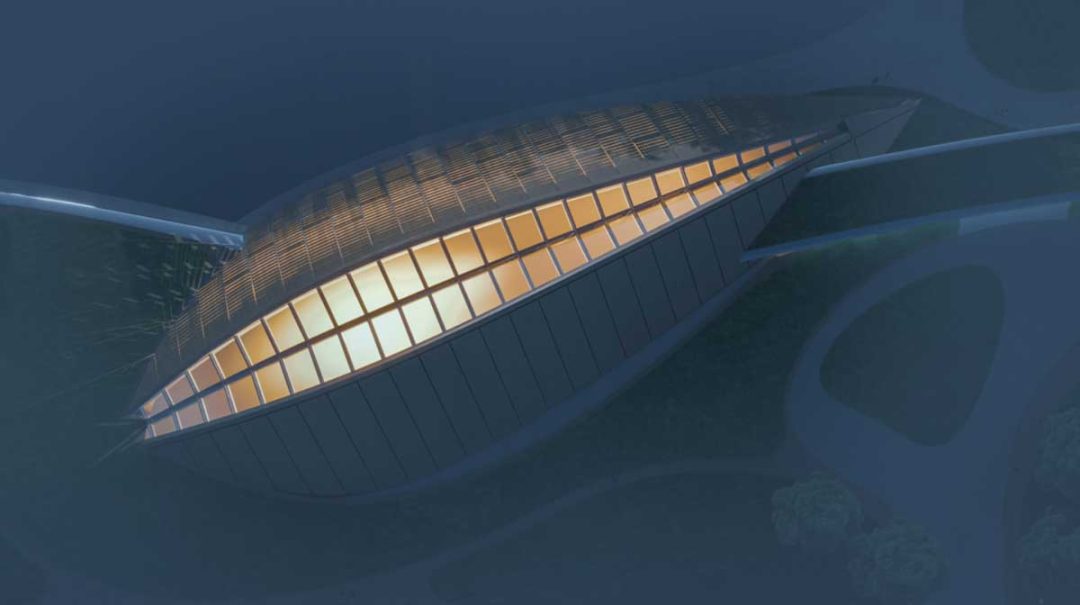
The Sanxingdui Museum Park is located at the northeast corner of the site’s core protected region, covering a total area of 90,000 square meters. The design includes urban planning, a new museum and visitor reception service centre, and an overall landscape strategy. Upon its completion, the museum will accommodate activities like collection, display, protection and research for the excavated cultural relics from the Sanxingdui site.
The six wooden buildings are scattered in an east-west direction. East of Xiangxin Road is the site’s first building; a Visitor Center covering a floor area of 5,830 square meters. Extending westwards, five buildings of various scales form the new museum. In total, the new museum covers an area of about 30,000 square meters, with a construction area of 28,650 square meters.
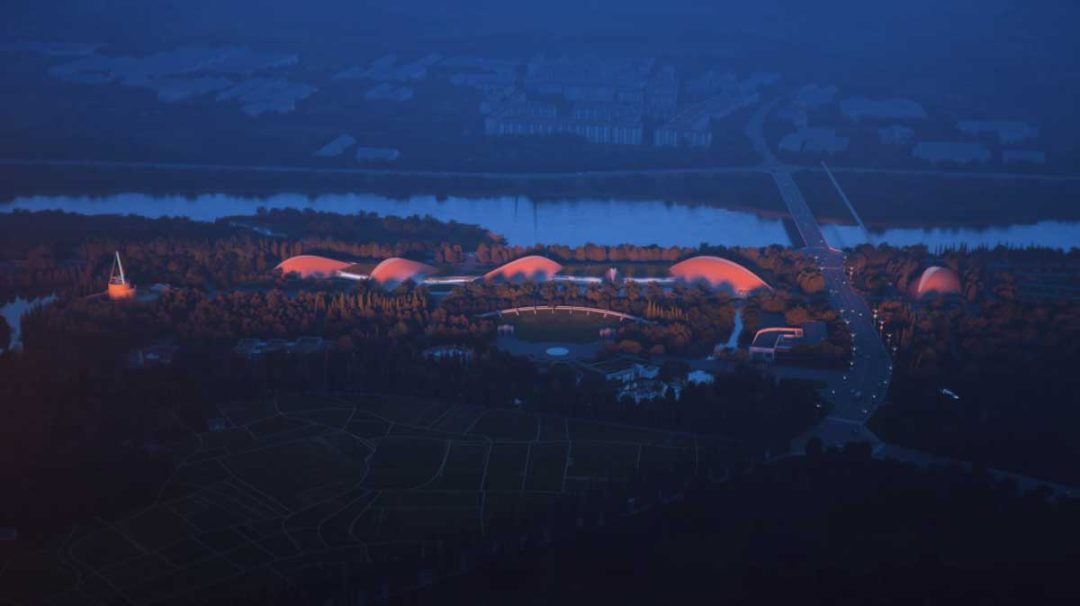
During the day, the building’s wooden facade echoes the park’s natural landscape. The timber structure’s large spans allow for open, rich column-free interior spaces inside the building, yielding maximum flexibility for exhibition layouts. Meanwhile, the rooftop skylight provides natural light for the museum.
After sunset, the six buildings are enlivened as torch-like eyes behind the bronzeware and golden masks of Sanxingdui, uniting the spirits and forms, allowing people in the museum to wander between history and the future.
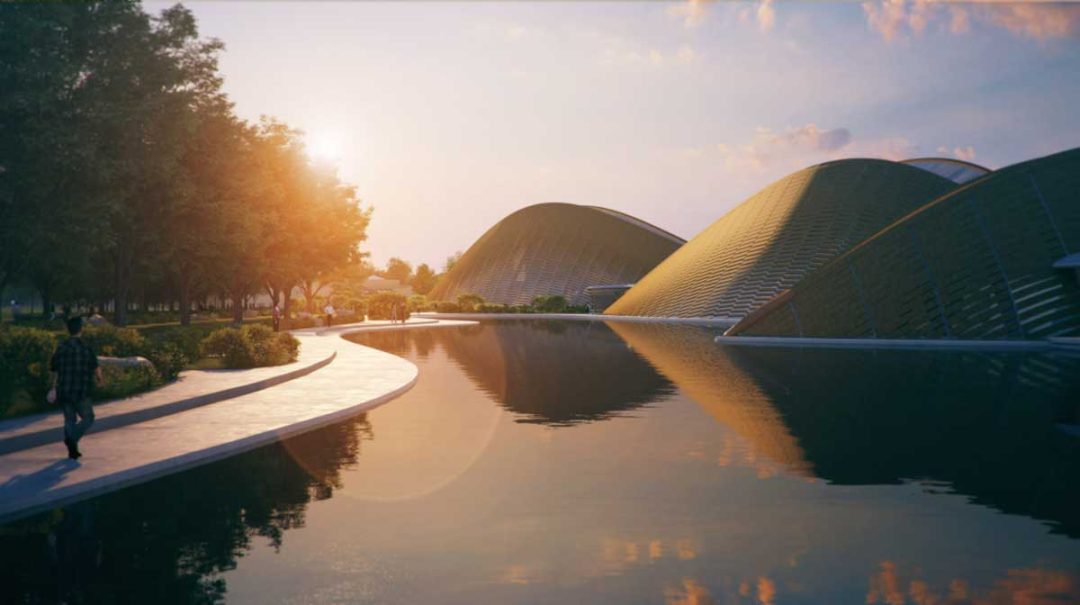
MAD’s vision of the park is of a place where humanity meets nature. The new scheme was therefore not designed as a single large structure, but as a scheme which weaves through and interacts with its surrounding landscape. The scheme respects and preserves the site’s natural trees and water features where possible, weaving these natural features into a landscape strategy that remains in harmony with the new pavilion building. The result is an atmosphere of unity between the buildings and the landscape.
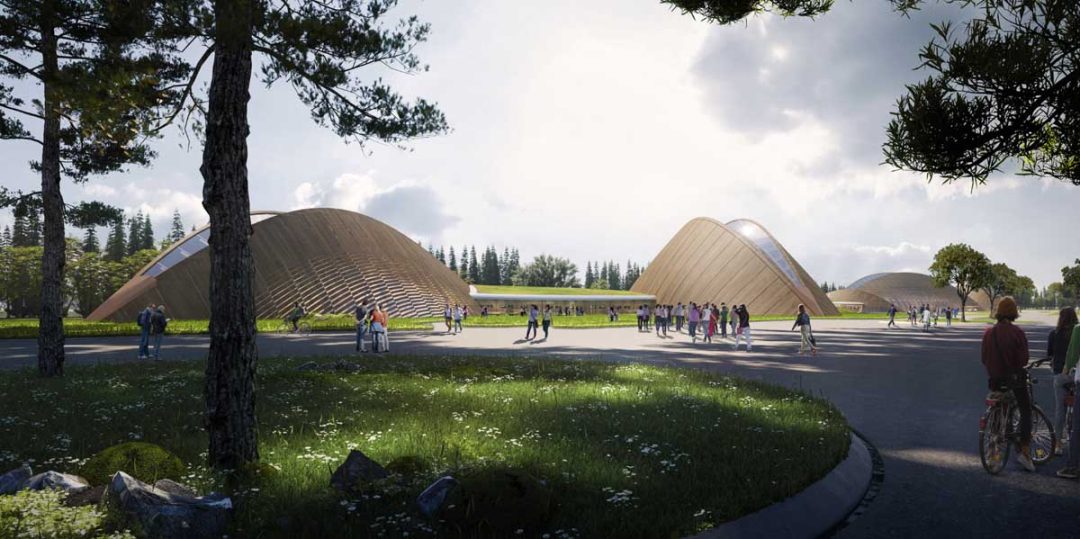
Visitors can walk slowly from the north side of the Duck River to the green roof on the second floor and enjoy a 360-degree view of the rich scenic park and river. After stepping out of the new museum, people can journey on further, visiting the Digital Experience Hall (currently referred to as the Bronze Pavilion), the Cultural Relics Conservation and Restoration Exhibition Center, and the Study Hall (currently referred to as the Comprehensive Pavilion).
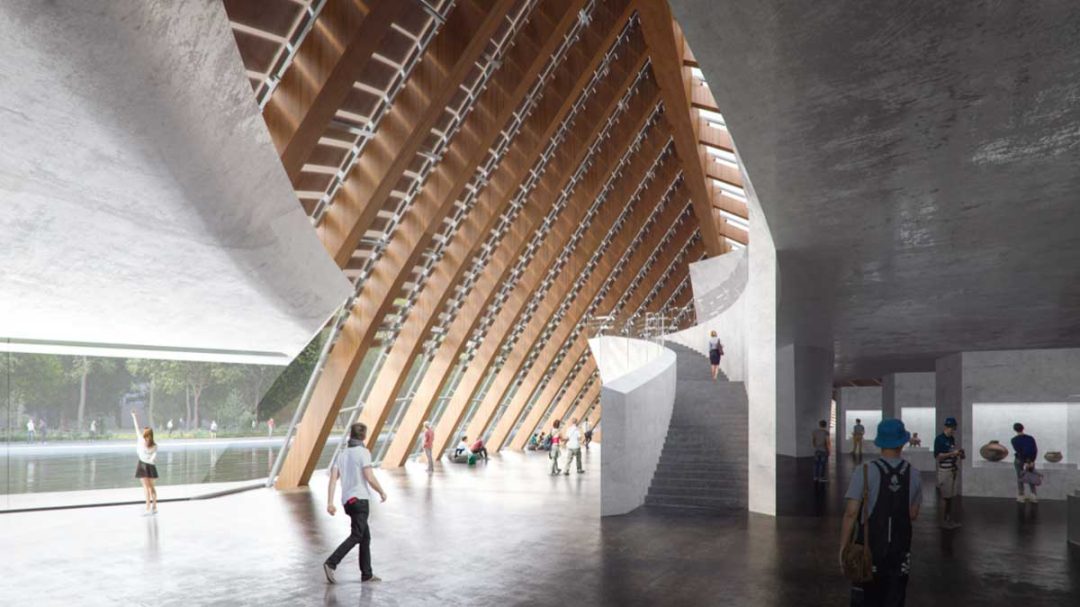
This journey, along a preserved boulevard, allows visitors to experience the culture of Sanxingdui from varying angles and perspectives.
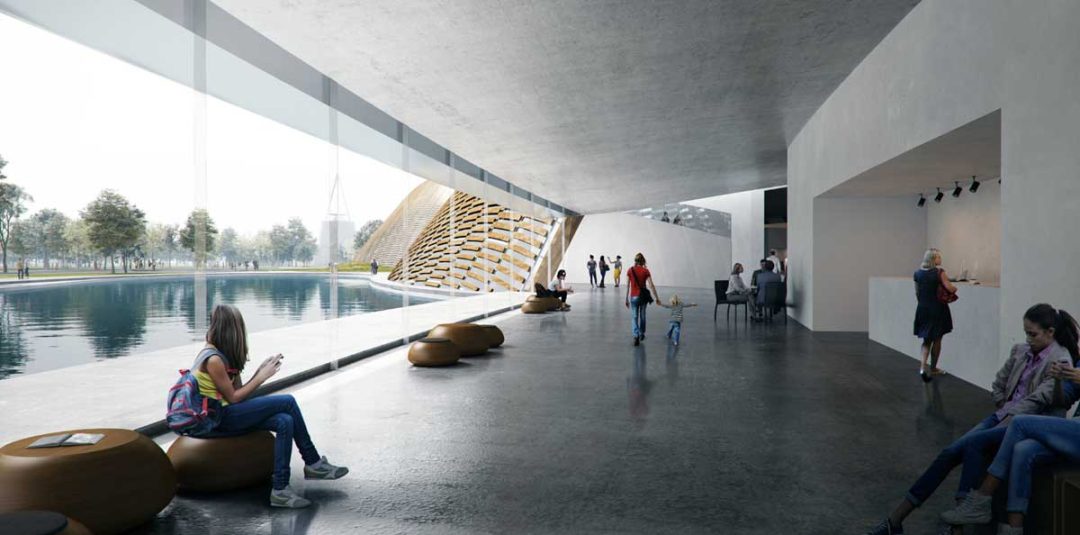
The new Sanxingdui Museum should be more than just a building which exhibits cultural relics; it should create and render an atmosphere where people’s minds and spirits can be released and soar. The intersection of artifacts, atmosphere, and nature will encourage people to experience the Sanxingdui civilization’s inscribed influence on contemporary civilization and the human spirit.

